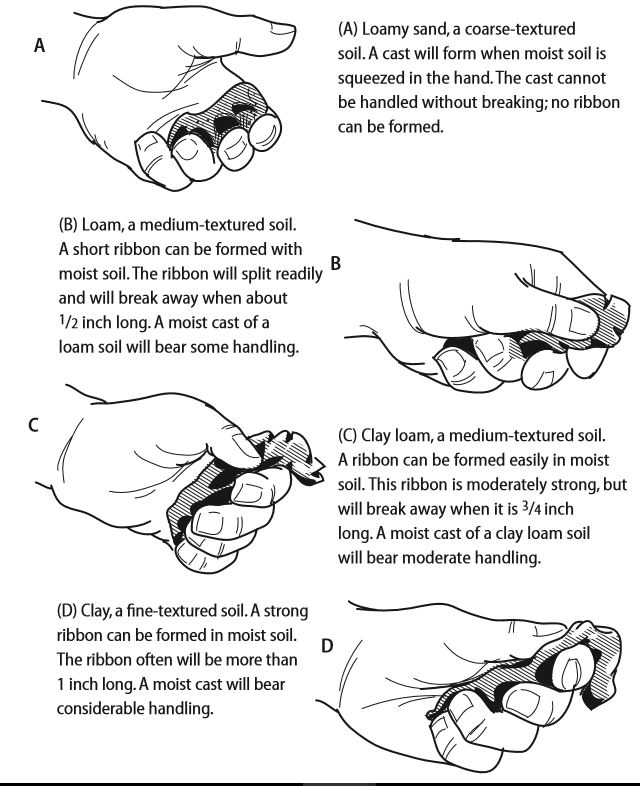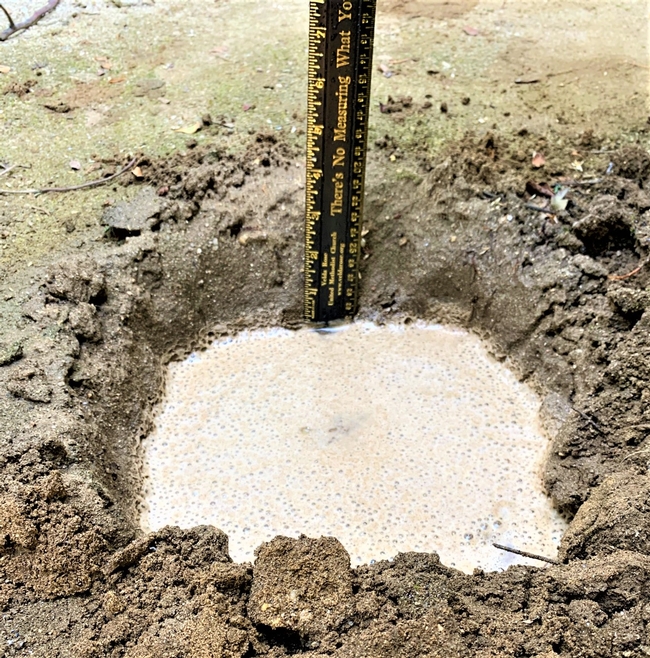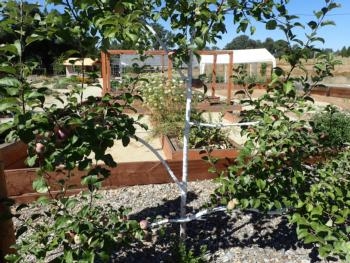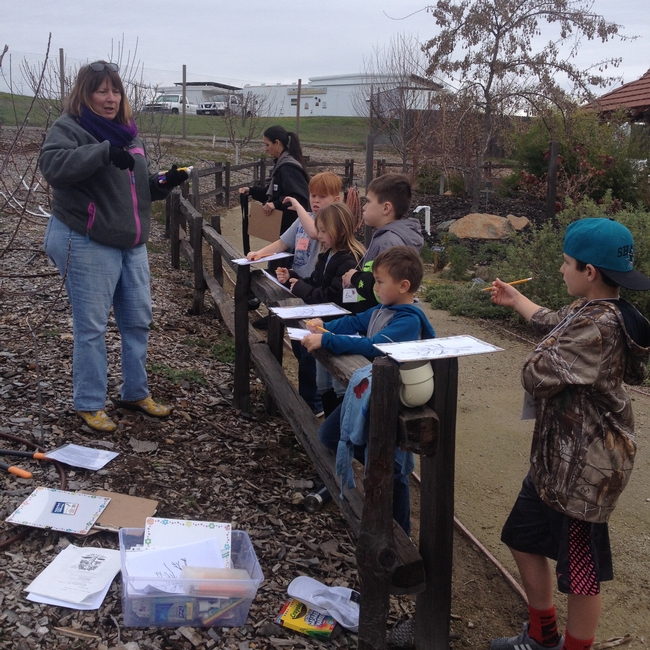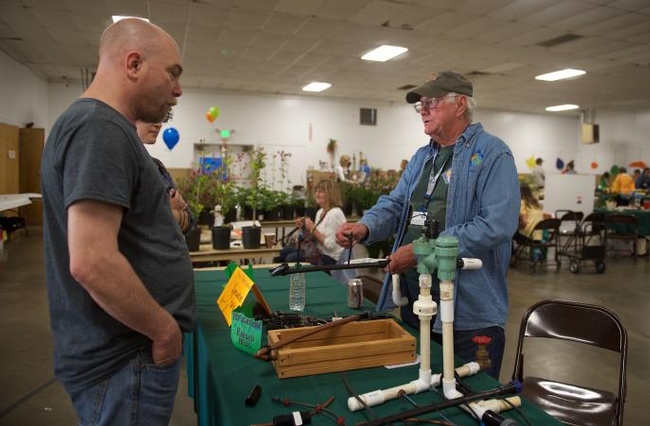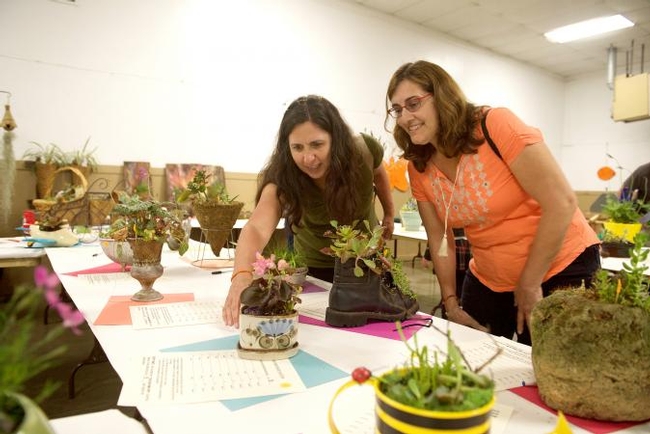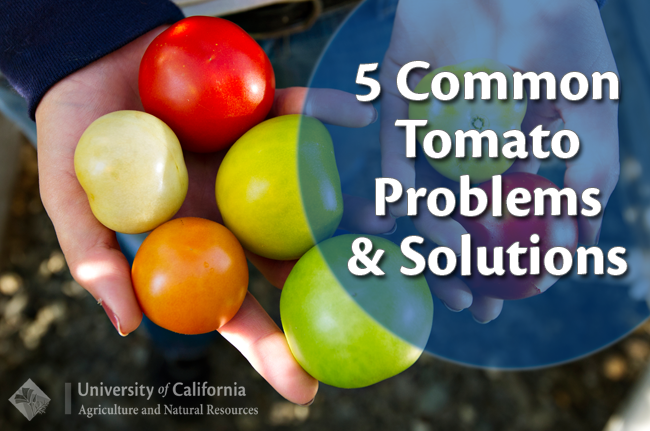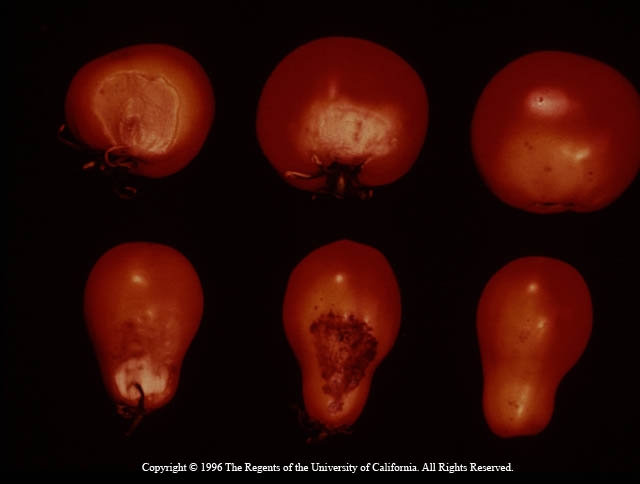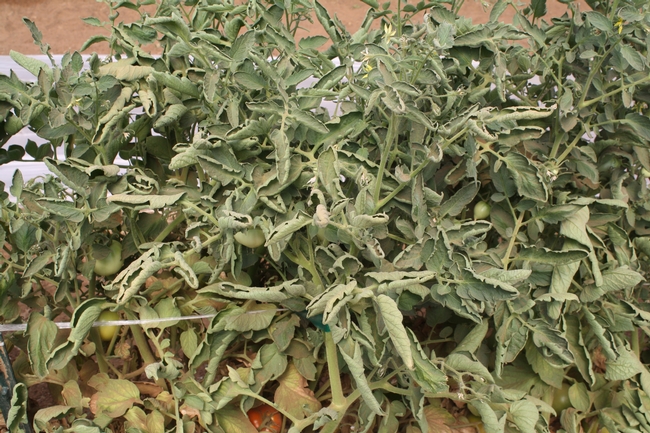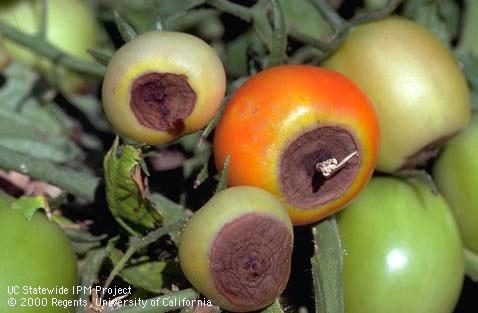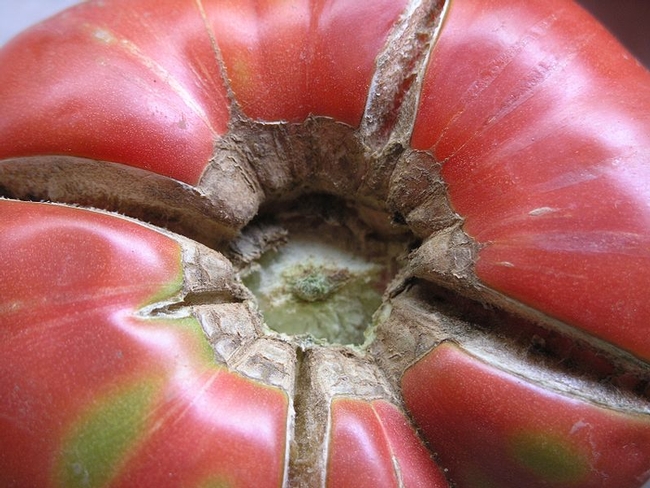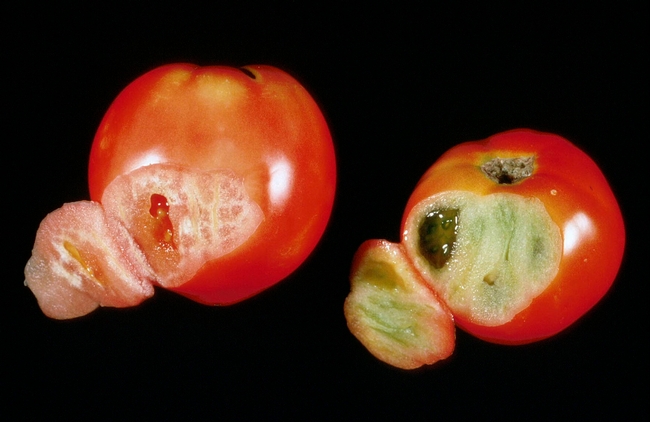Posts Tagged: ucce
Landscape Tree Irrigation to Maximize Tree Health, Benefits, and Beauty
Most trees in California need supplemental irrigation above and beyond what Mother Nature supplies naturally. Even drought-resistant species need regular watering through their first growing season due to their shallow roots. Once trees become established, it's important to water less often but more deeply to encourage deep rooting and structural balance above and below ground. Both under and overwatering can lead to unhealthy trees and even death if the situation is not corrected. Trees receiving too little or too much water exhibit similar symptoms since, in both cases, water is not available to the plant. Trees initially wilt, grow slowly, and develop yellow leaves. Over time, growth stops and leaves become brown and drop. Overwatered trees often develop lower crown and root rot from one or more disease-forming pathogens.
Knowing what type of soil you have (soil texture) is as important as knowing the water needs of your trees. Use the ‘feel test' (pictured below) to find out how much water your soil holds and how often to water. Heavier clay-based soils hold water longer and drain more slowly than sandier soils that need to be watered more often for shorter periods of time.
Trees should not be watered on the same irrigation system used for lawns and groundcovers. Soaker hoses and drip systems allow trees to be watered less often but for longer periods of time than your lawn or groundcover. Avoid applying water too close to the trunk. Instead water half-way between the trunk and the dripline of the tree and outward. If you use a garden hose, apply the water on the lowest volume possible slowly, moving the hose every few hours to each of four quadrants around the tree.
Applying a 3-4 inch layer of mulch around the tree can reduce soil evaporation. Use only non-flammable mulches in fire-prone areas within five feet from the house and non-contiguous for the first 30' away from the house. In all cases keep mulch a few inches away from tree trunks to keep the trunks dry.
Tip: Before planting a tree, make sure there is adequate drainage. Dig a hole where you want to plant it (the same depth of the pot, which is about one foot) and fill the hole with water. Let it completely drain and refill it. Measure the time it takes to drain one inch using a ruler. If it does not drain more than one inch an hour it is not a good location for your tree. Avoid adding compost or soil amendments to try to correct the problem since tree roots will likely grow in circles, staying within the confines of the amended hole rather than growing outward the confines of the amended hole rather than growing outward.
Sensors, drones, and CIMIS: UCCE Partners with EarthWatch and CBWCD to Save Water in Urban Landscapes
On Friday UCCE San Bernardino County Master Gardener Coordinator Maggie O'Neill and I hosted a tour that showcased UC ANR Urban Water Use Specialist's Amir Haghverdi's landscape plots at the UCR Citrus Experiment Station. In attendance were CEO Scott Kania and Lead Scientist Mark Chandler from EarthWatch, Becky Rittenburg and Monica Curiel from Chino Basin Water Conservation District, and Darrel Jenerette, UC Riverside Professor of Landscape Ecology. Our team is implementing an exciting citizen science project measuring water conservation based on implementing 'best practices' in urban landscapes in the greater Los Angeles Basin.
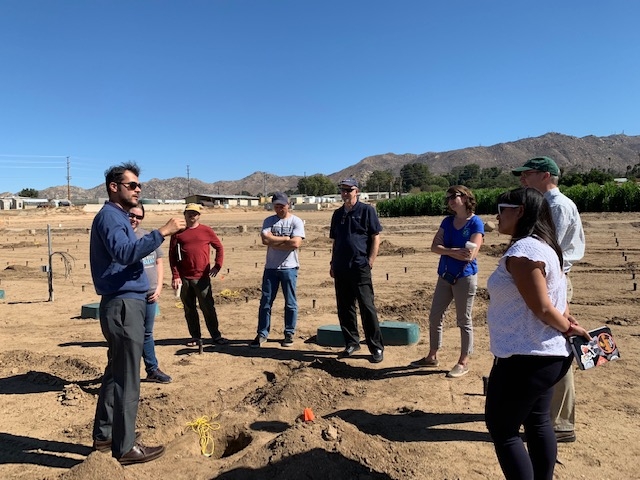
Amir Haghverdi showing plots to EarthWatch, UCCE and CBWCD teams
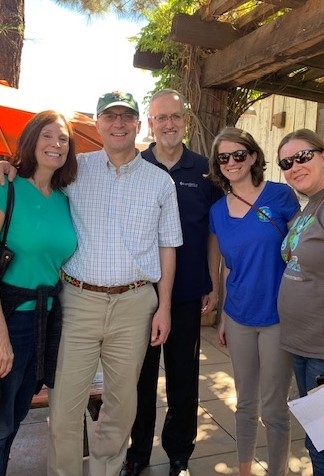
EarthWatch, CBWCD, and UCCE San Bernardino team
The New Backyard Orchard Workshop: Grow Your Own Fruits and Nuts
Thinking about planting a fruit or nut tree? Fall is the perfect time to start planning the steps for a new tree or trees, including variety selection, location in the landscape and planting plan. Most gardeners use their taste buds during summer and fall harvest to identify fruit and nut varieties and cultivars that have desired characteristics. Additional preparation in the fall can make for an easier and more informed process for winter procurement and planting of bareroot fruit and nut trees.
Identify a location for fruit trees where they will receive full sun 6 or more hours per day during the growing season, too much shade will affect the quantity and quality of fruit produced. If you don't have loose, well-drained soil you may want to amend the soil and add compost, or fertilizers.
- Proper tree selection
Selecting a quality tree and caring for it increases the chances for success. This begins with selecting a tree from a quality nursery. At the nursery this winter, select bareroot trees that appear strong, healthy, and do not show signs of disease. - Good planting techniques
Planting of bareroot trees should take place in winter, between December and March. Dig a planting hole just bigger than the depth and width of the roots, it is best to leave a “pedestal” or to leave the soil below the root system undisturbed to help prevent the tree from settling. Fruit trees should be planted high to help avoid crown rot disease.
The UC Master Gardeners of El Dorado County have gathered an excellent team of experts to teach about tree factors and show you how to take advantage of pruning techniques that allow your trees to obtain better sun exposure, better airflow, and better structure for easier netting and pest prevention.
Join the UC Master Gardeners of El Dorado County, on Nov. 2 for a new workshop titled The New Backyard Orchard, at the Cameron Park Community Center. The New Backyard Orchard workshop will help you choose the right tree varieties for your region, plant trees correctly, and shape trees to make them attractive, as well as high-bearing. You'll receive a thorough, scientifically correct understanding of how trees generate fruit, to help you understand how to manage your orchard.
When:
Nov. 2, 2017
10:30 a.m. – 4 p.m.
Where:
Cameron Park Community Center
2502 Country Club Drive
Cameron Park, CA 95682
Speakers:
- Phil Pursel, Specialist, Dave Wilson Nursery
- Ted DeJong, Professor Emeritus, Pomology, UC Davis
- Chuck Ingels, Farm Advisor, UC Cooperative Extension
Cost:
$40 registration, light lunch included
Whether you have just a tree or two, or hope to expand your food supply through intensive backyard orchard development, this workshop is for you!
UC Master Gardeners who attend will earn four hours of Continuing Education credit. To learn more and to pre-register, please visit our website at http://ucanr.edu/mgedc-workshop or register at http://ucanr.edu/mgedc-workshop-reg. If you have questions, please call (530) 621-5528.
References:
Ingels, C.A., Geisel, P.M. & Norton, M.V. (2007) The Home Orchard: Growing Your Own Deciduous Fruit and Nut Trees UC Agriculture & Natural Resources, Publication 3485
The California Backyard Orchard, homeorchard.ucanr.edu
UC Master Gardeners and Outreach: A Tale of Two Events
If there is one thing I appreciate about my UC Master Gardener volunteer groups, it is their desire to rethink, change, evolve and avoid stagnation. Now, sometimes there are “growing pains” involved with expanding a program or developing a new one, but the energy is needed to refresh the enthusiasm of both the volunteers and local gardeners who keep tabs on their outreach projects.
Years ago, a group of my volunteers came up with the idea to create a new community event that would bring amazing speakers into the county to deliver fun and interesting gardening topics to our local gardening clientele. They called it, “A Gardeners' Gathering”, it was created as a one-day event located in an historic fruit shed renovated to host large groups in the “middle” of the county so as to be convenient for both our urban and rural gardeners. The six speakers were chosen carefully and related non-profit groups were invited to have tables at the event. Since it was a full day event, food and beverages were provided, pre-registration was required and the cost was relatively high (although the event was not a fundraising event).
It was very successful in many ways – one big product of the event was the first online credit card survey created and used in our office for registration. For years, we packed the fruit shed with eager gardeners looking forward to networking, listening to some great speakers, and enjoying good food too. After doing this event for years, the volunteers noticed that the same folks were attending year after year and we were limited to 130 registrant because of space limitations. This meant, there was no options for expansion of the event in its current form. So, it was brought up that maybe we should rethink the event which was difficult to contemplate considering how well it was running.
The event was reviewed in a series of meetings and UC Master Gardeners decided it was time to change it up and reach more local gardeners with a different event format. Enter the new “GardenFaire” – an event created and put on for the first time last year reaching more than 300 people. This event had the goals of being inexpensive with no registration required, a kid's area to bring in families, less speakers, more tables and an “Ask a UC Master Gardener” area that had plenty of visitation! We believe this event has a huge potential for future growth.
So, here we are about to put on the 2nd Annual Garden Faire in Placer County and it shows how sometimes a pivot with an event can quickly double or quadruple (fingers crossed!) the number of people we can reach through our program. Remember, even if you have a successful event going for years - take the time to review and reconsider after a while. It may end up being the best path forward to change it up and keep all of our local gardeners wondering, “What will those UC Master Gardeners do next?”
For more information about the UC Placer Master Gardener Program and their upcoming events, visit their website at pcmg.ucanr.org.
Save
5 Common Tomato Problems and Solutions
One of the most versatile and rewarding plants in a summer edible garden is the tomato. According to a 2014 study by the National Gardening Association, 86 percent of homes with vegetable gardens grow tomatoes. It is understandable that the tomato plant is a popular home vegetable garden staple, tomatoes offer thousands of different varieties options and flavors. Plus, nothing beats the flavor of a ripe tomato straight from the garden.
When properly cared for, a single tomato plant can produce 10 to 15 pounds (4.5 to 6.8 kg) or more of fruit. If tomato yields aren't what was expected or the fruit is damaged it could be due to a number of abiotic disorders, diseases or pests. Abiotic disorders result from nonliving causes and are oftentimes environmental, for example: unfavorable soil conditions, too much or too little water, temperature extremes, physical or chemical injuries, and other issues that can harm or kill a plant. Below are five common abiotic disorders of tomatoes and recommended remedies from the UC Agriculture and Natural Resources publication, Growing Tomatoes in the Home Garden.
1. Sunburn
Problem: Fruit turns light brown and leathery on side exposed to sun.
Cause: Overexposure to sunlight.
Solutions:
• Maintain plant vigor to produce adequate leaf cover.
• Avoid overpruning.
• Provide partial shade during hours of most intense sunlight.
2. Leaf Roll
Problem: Older leaves roll upward and inward suddenly, leaves become stiff to the touch, brittle, and leathery.
Causes: High light intensity and high soil moisture, particularly when plants are staked and heavily pruned
Solution:
• Choose less-susceptible varieties.
• Maintain even soil moisture.
• Provide shade during hours of intense sunlight.
3. Blossom End Rot
Problem: Water-soaked spot on blossom end of fruit enlarges and darkens, becomes sunken and leathery. Affects both green and ripe fruit, and is more common on sandier soils.
Causes: Calcium nutrition and water balance in the plant, aggravated by high soil salt content and fluctuating soil moisture.
Solutions:
• Maintain even soil moisture.
• Amend planting area with compost to improve water retention.
• Avoid heavy applications of high-nitrogen fertilizer.
• Soils deficient in calcium may be amended with gypsum.
4. Fruit Cracks and Catfacing
Problem: Circular concentric cracks around the stem end (concentric cracking), cracks radiating outward from the stem (radial cracking), malformation and cracking at the blossom end (catfacing).
Causes: Very fast growth with high temperatures and high soil moisture levels. Wide fluctuation in soil moisture and or air temperature. Any disturbances to flower parts during blossoming.
Solution:
• Keep soil evenly moist.
• Maintain good leaf cover or provide partial shade during hours of most intense sunlight.
• Mulch around the plant 3 to 7 inches deep to maintain soil moisture and temperature.
5. Solar Yellowing and Green Shoulders
Problem: Yellow or yellow-orange instead of normal red color, upper portions of the fruit remian green even though the lower portion appears red and ripe.
Cause: High temperatures and high light intensity.
Solutions:
• Maintian plant vigor to produce adequate leaf cover.
• Avoid overpruning.
• Provide partial shade during hours of most intense sunlight.
Pests eating away at your tomatotes?
Other damages that are caused to tomato plants can be caused by a variety of pests. Some examples of common pests, include: hornworms, tomato fruitworms, tomato pinworms, stink bugs, white flies, and leafminers. For information about identifying and managing pests in your edible garden visit the UC Integrated Pest Management (UC IPM) website, ipm.ucanr.edu.
Looking for free gardening advice?
Since 1981, the UC Master Gardener Program has been extending UC research based information about home horticulture, sustainable landscape, and pest management practices to the public. Through a vast network of more than 6,000 certified UC Master Gardener volunteers, the program is administered by local UC Cooperative Extension (UCCE) county offices across California. Contact the UC Master Gardener Program in your county for more information about edible gardening or upcoming educational workshops, mg.ucanr.edu.
Resources:
Growing Tomatoes in the Home Garden Publication 8159, anrcatalog.ucanr.edu/pdf/8159.pdf





